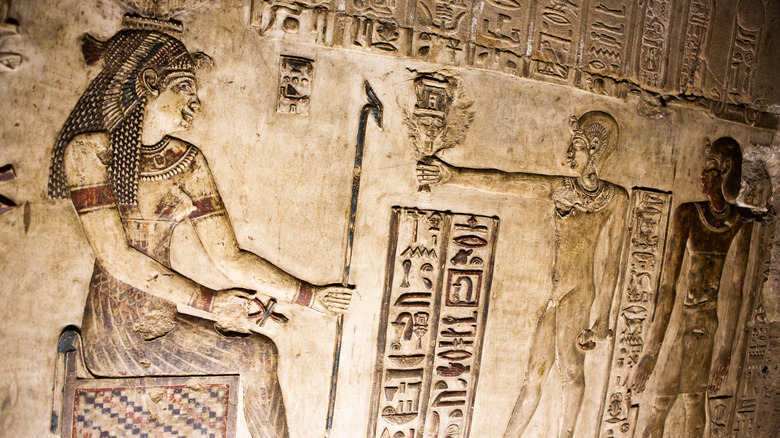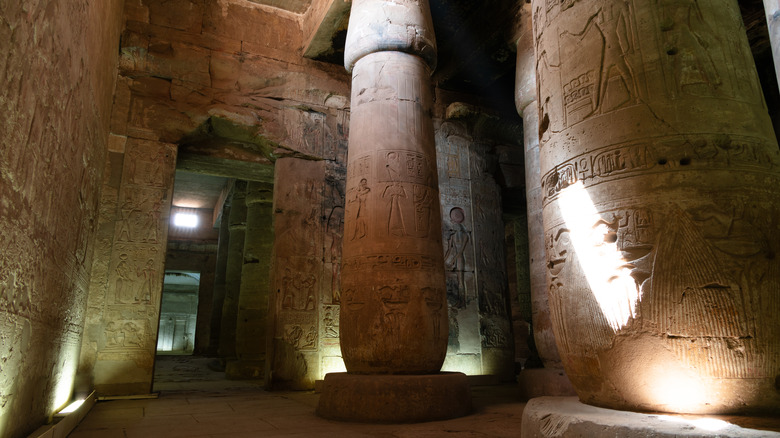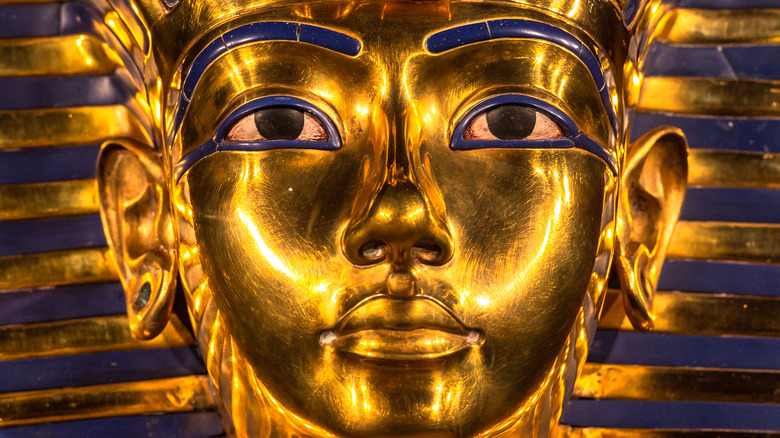How Many Dynasties Has Ancient Egypt Been Divided Into?
There's something about ancient Egypt that continues to ignite the imagination, even 2,000 years after it was absorbed into the Roman Empire. Maybe it's the hieroglyphics, those 2D depictions of pharaohs, rows of servants, and gods like the dog-headed Anubis. Maybe it's countless, exotified tales of cursed mummies, Cleopatra's eyeshadow, and the Biblical Exodus. Maybe it's mystery of the tangible things the Egyptians left behind: sarcophagi, the Pyramids at Giza, and the Sphinx. Or maybe it's just Brendan Fraser ("The Mummy," 1999).
Ancient Egypt has certainly received enough attention from historians and researchers, enough to foster an entire academic field, Egyptology. Egyptians wrote extensively, on stone or papyrus, which helps us understand them. Papyrus, however, crumbles to dust. Thankfully, Greek historians like Herodotus (484 – 425 BCE) helped preserve Egypt's history.
But in all this, how well does the average person actually know about ancient Egypt besides a basic hodgepodge of imagery and terms? We're talking from the region's earliest settlers some 5,000 BCE all the way to the death of Egypt's final Ptolemaic ruler, the renowned Cleopatra VII in 30 BCE (per History). Starting about 3100 BCE, Egypt became a unified kingdom, both upper (in the south) and lower (at the Nile Delta in the north), when King Menes conquered the southern kingdom. He kicked off ancient Egypt's first dynasty. From then on, Egyptian beliefs, customs, architecture, etc., evolved dramatically over its 3,100 years, but the nation persisted. In the end, 31 dynasties ruled over Egypt altogether.
Three main periods over 3,100 years
Ancient Egypt's 31 dynasties are cut up into three different main periods: the Old Kingdom (2686-2181 BCE, dynasties 3-6), Middle Kingdom (2125-1650 BCE, dynasties 11-13), and New Kingdom (1550-1069 BCE, dynasties 18-20), per the Australian Museum. These main eras are followed by a period of time collectively known as the "Late Period" or "Late Dynasties" because they more or less presaged Egypt's end: the Nubians occupying Egypt when Egyptian power flagged (1069 BCE), Egypt reclaiming power (664 BCE), Alexander the Great conquering Egypt (332 BCE), and then the Romans doing the same (30 BCE). In the first century CE, "Coptic" Christianity took hold in Egypt, and by 395 CE, Roman rule fell apart when the Roman Empire split into Western and Eastern halves (per World History).
These periods are all separated for various sociopolitical reasons, as well as overall differences in artwork, commodities, religion, architecture, etc. Dates can vary because no Egyptian living 3,500 years ago clapped his hands and said, "Boom, now it's New Kingdom time."
These main periods are also separated by transition periods known as "Intermediate Periods." The First Intermediate Period (2181-2125 BCE) featured a conflict between north (Memphis) and south (Thebes). The Second Intermediate Period (1650-1550 BCE) featured Egypt falling to Hyksos conquerors and reverting to simpler artwork and traditional, Memphis-based values. The Third Intermediate Period (1069-664 BCE) covers the entire Nubian occupation. Dates are a bit hazy before the Old Kingdom, when the first and second dynasties reigned.
31 dynasties, interrupted
Remember that a "dynasty" is defined by a single family. Thirty-one dynasties over 3,100 years puts things in proper perspective: power changed hands a lot. To illustrate, the Metropolitan Museum of Art has a humongously long list of every one of Egypt's rulers (except the pre-Old Kingdom first and second dynasties). Some rulers, like the fourth dynasty's Nebka II (2494–2490 BCE), only stayed in power as a long as a single-term U.S. president. Others like the 12th dynasty's Amenemhat III stayed in power for 46 years (1859–1813 BCE). When we dig into details like this, "ancient Egypt" looks far less like one, ongoing, uninterrupted state, and far more like an ever-evolving nation with a history as cluttered as any modern day country's.
The Old Kingdom (2686-2181 BCE) was characterized as a "golden age" of prosperity and stability, particularly the third and fourth dynasties. This is when the three Pyramids at Giza were built, as History says (from 2589 to 2503 BCE collectively). The Middle Kingdom (2125-1650 BCE) enjoyed extended diplomatic ties and prolonged peace.
And the whole god-human intermediary "pharaoh" thing? It didn't show up until the New Kingdom (1550-1069 BCE), halfway through Egypt's history, per World History. Before then, the god Osiris was considered the first "king" of Egypt, and Egypt's rulers were called "kings" like him. The authority of Osiris was represented in the shepherd's crook (guidance) and the wheat-threshing flail (abundance, fertility). This is why hieroglyphics depict Egyptian kings with these artifacts.
Nubians, Akhenaton, and Cleopatra
It's worth going into some of the major hiccups along ancient Egypt's dynastic history. Top of the list is the Nubians. They lived in an Egypt-controlled region of modern-day Sudan that the Egyptians called "Kush." As Purdue University goes on to say, Egypt launched a campaign around 1500 BCE (during the Old Kingdom) to conquer Kush, seize its resources, and utilize the area as a trade depot along the Nile.
The Nubians and Egyptians in the area integrated, intermarried, and intertangled their cultures to the point where Nubian-Egyptians became their own ethnic group. When northern Egypt started falling apart for a variety of reasons, the Nubians more or less moved in around 1069 BCE and founded the 25th dynasty (per the Australian Museum). It's incorrect to refer to them as "conquerors" when they essentially held Egypt together for 400 years.
Another major dynastic event came when 18th dynasty king Amenhotep IV completely overhauled Egypt's entire religion and declared the nation to be monotheistic worshippers of the sun god Aten, as Ohio State University summarizes. He changed his name to "Akhenaton" — "the Servant of Aten" — after four years of rule (1353–1349 BCE) and became the first "pharaoh." In the full list of Egypt's rulers on the Metropolitan Museum of Art, he appears as two separate entries.
Egypt's dynasties finally ended with the death of Cleopatra VII in 30 BCE. As History Extra explains, she committed suicide during Roman Emperor Octavius's attempt to conquer Egypt.



